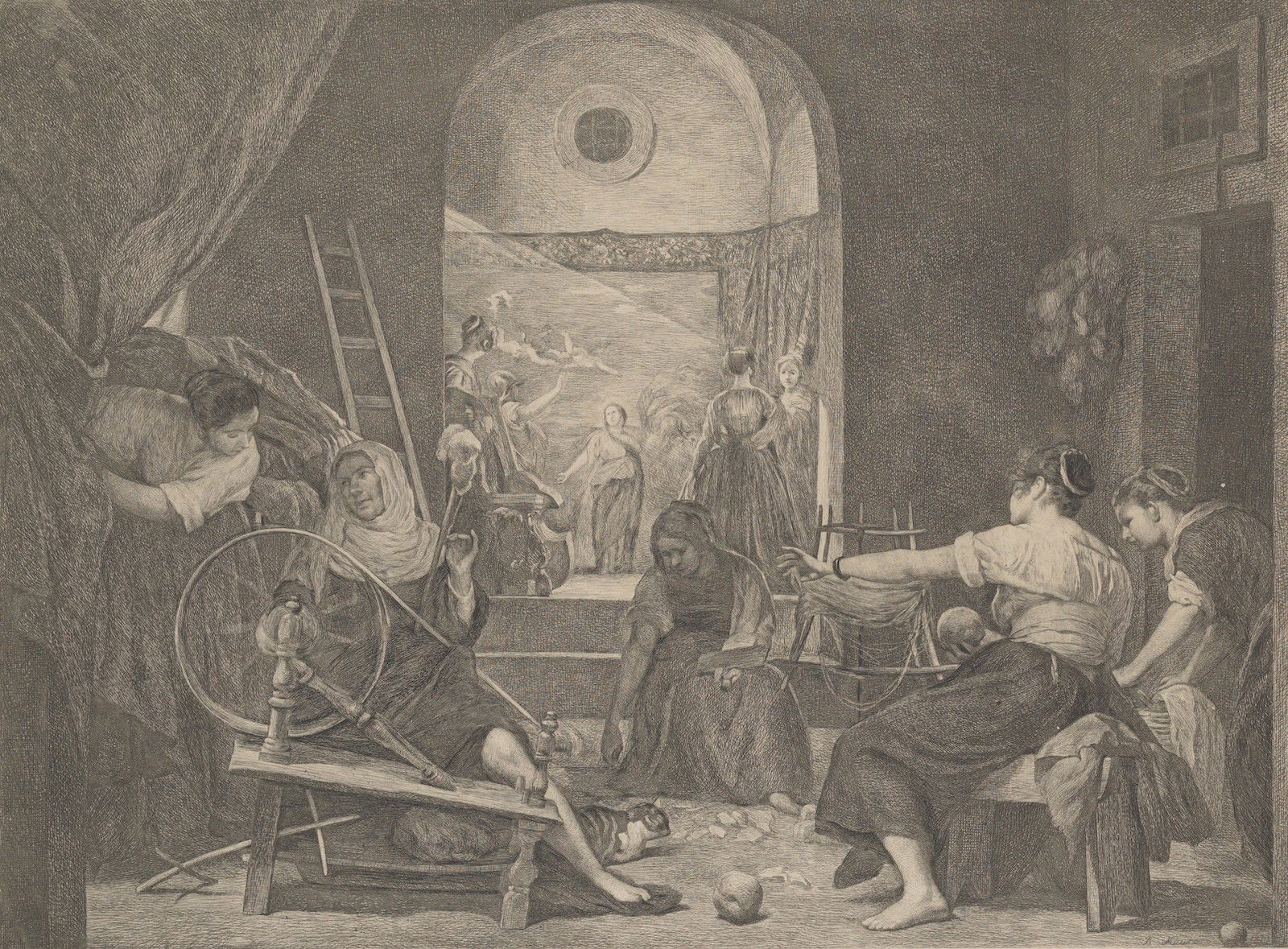Arachne and Minerva
The myth of Arachne and Minerva is a commentary on the plight of the artist, wrapped in a dramatic tale of rivalry between god and mortal.

Arachne was a weaver, held in the highest regard by both gods and mortals. But as more and more praise was heaped upon her, she became somewhat arrogant, even daring to challenge Minerva, the god of war and art, to a weaving contest. Minerva, disguised as an old woman, tried to warn Arachne about her behaviour, but the weaver remained unrepentant. Unable to change her mind, Minerva revealed her true identity and accepted Arachne’s challenge.
Minerva wove a cloth that depicted those mortals who had been foolish enough to come into conflict with the gods. Arachne, far more skilful, wove the story of Europa, and did so at such a level of artistic genius that it was said that the images of the god and the bull who deceived her were believed to be real by those who observed them.
Outspun, an angry Minerva tore Arachne’s cloth to shreds and hit her opponent repeatedly with her shuttle. Arachne, shocked by Minerva’s reaction, tried to hang herself in despair, but her opponent took pity on her. She would let Arachne live, but for the rest of eternity she would remain suspended. As Ovid wrote in his Metamorphoses, Minerva sprinkled the hanging Arachne with herbs: her body shrank, while her limbs grew thin and long. She became a spider.
For centuries, Velázquez’ The Fable of Arachne was regarded as a genre painting, depicting the kind of workshop that would have been common in early modern Europe. Only after the Second World War was it revealed that the tapestry depicted was a copy of Titian’s Rape of Europa – Arachne’s subject. The painting became open to several interpretations. Minerva may be the woman in the foreground with her head covered, in disguise. Is the weaver with her back to us Arachne? The two women standing in front of the tapestry are almost certainly Arachne and Minerva judging their creations. In a further example of the painting’s reflexivity, the woman wearing the helmet in the tapestry itself may stand for Minerva, about to punish Arachne for hubris.
Ultimately, the painting is a commentary on the unjust nature of criticism by those of high status towards the humble artist, which was of no doubt enormous appeal to Velázquez. Whatever the truth, this is a painting of considerable and, in parts, unknowable depth.